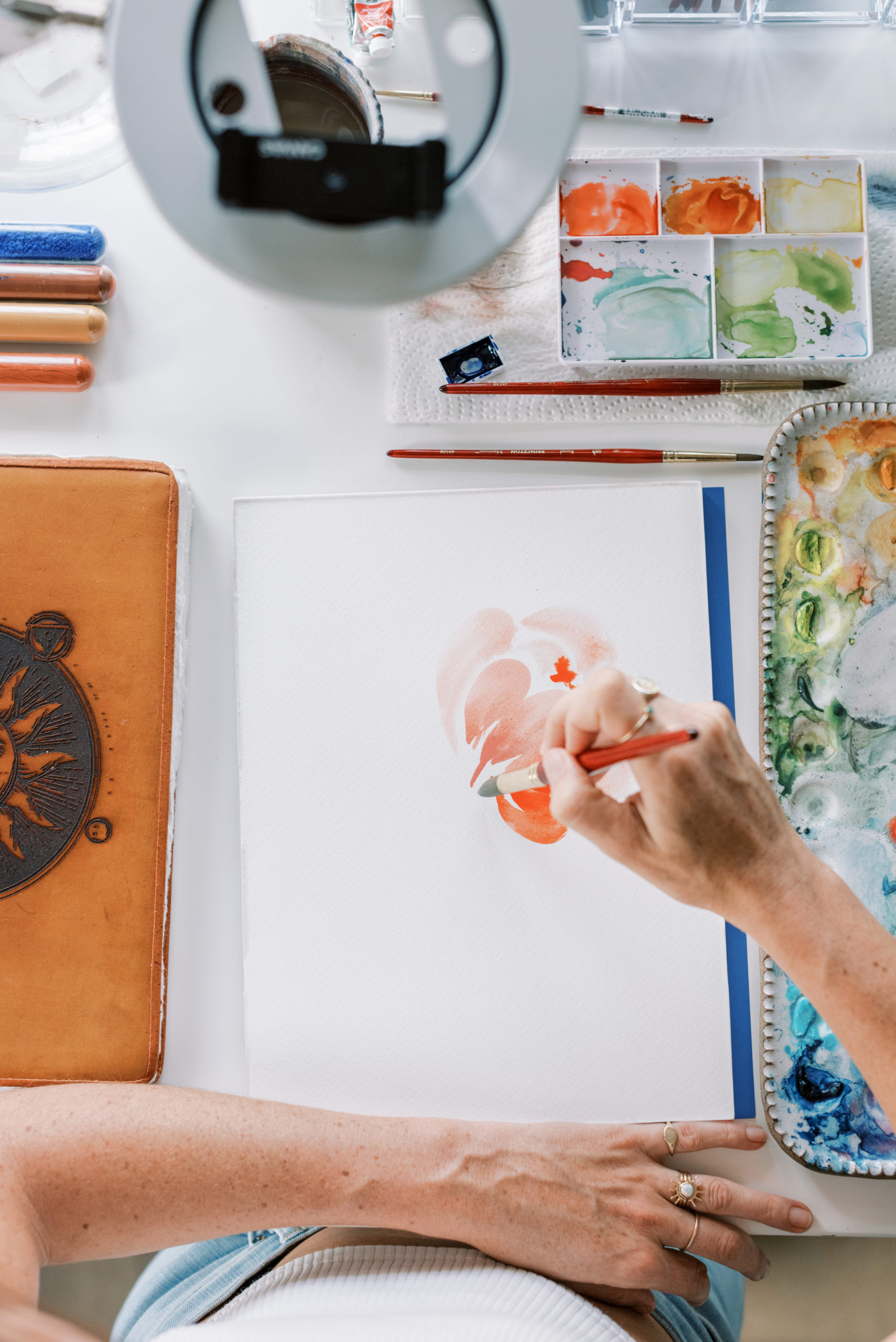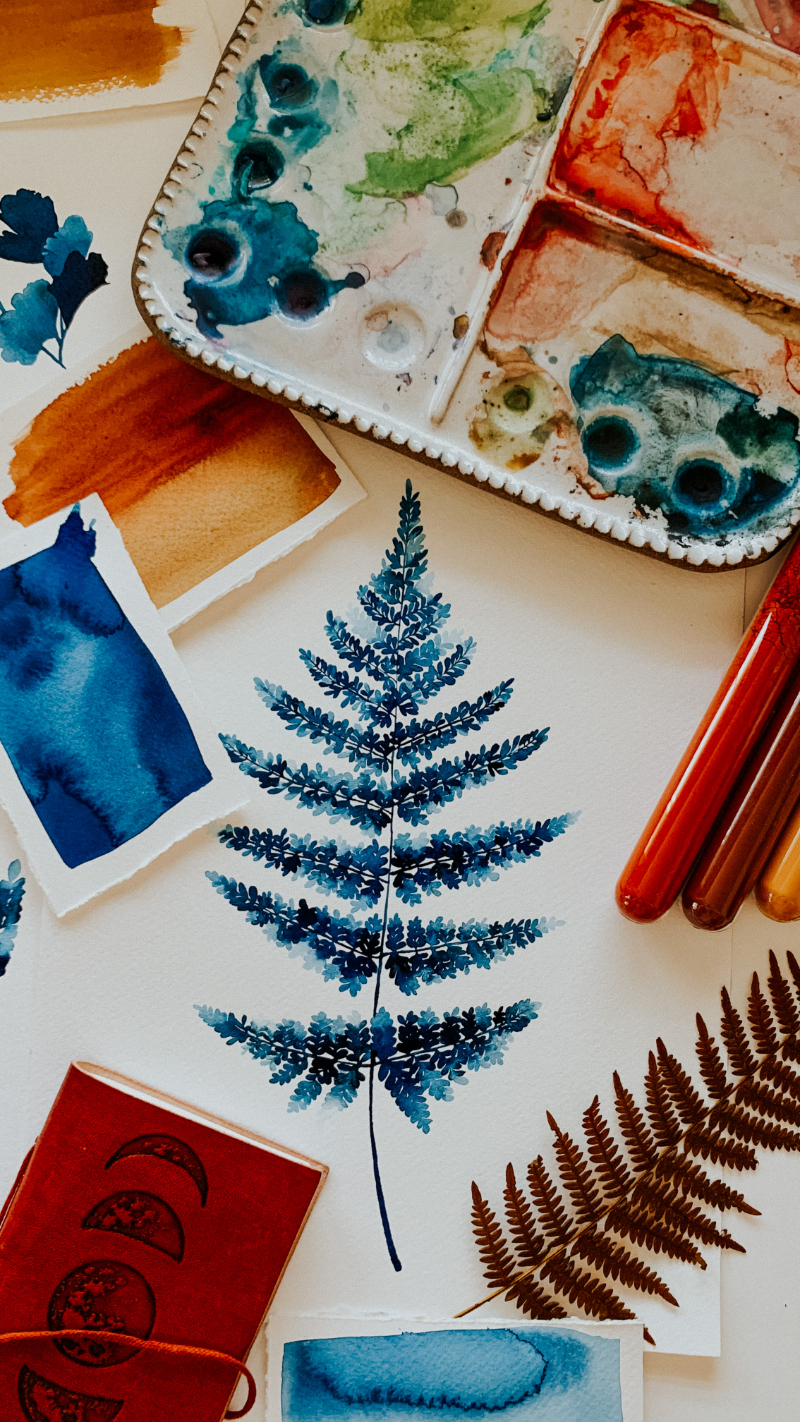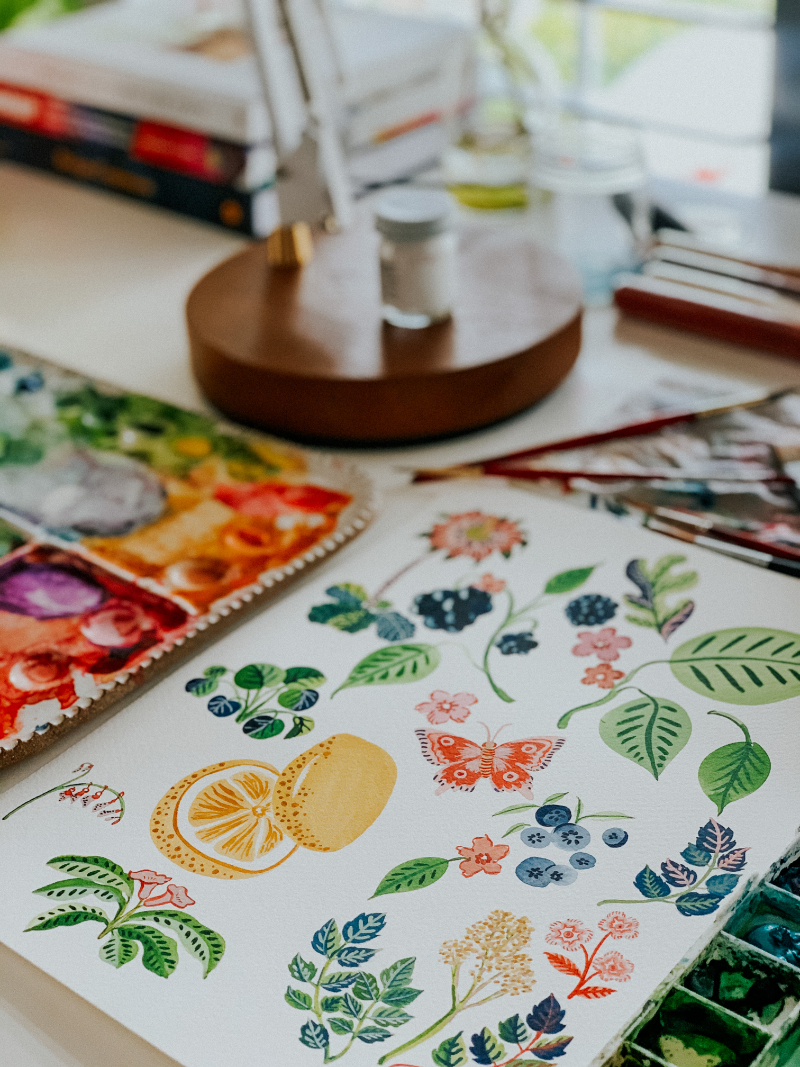As someone with hundreds of videos on my Youtube Channel about watercolor, one of the questions I'm constantly asked is: “What is more important—quality paper, paint, or brushes?” And you know what my answer is? Paper. Choosing the right watercolor paper can make or break your artwork. Especially in the beginning. And so today? I'm sharing the best watercolor paper (and what to consider) after years of trial and error!
Want to dive deeper into watercolor techniques? Sign up for my free Complete Guide to Watercolor!
Why Does Paper Matter for Watercolor Painting?
Paper is one of the biggest factors in the appearance of colors, how water and pigments pool, blend and dry, and so much more. While working with great paint and brushes is obviously recommended as well, without a good surface to work on, painting can be dull, unenjoyable, and honestly? Just frustrating.
If you’re wondering what to look for when buying watercolor paper, then let’s dive in!
Don’t feel like reading everything? Check out my Amazon storefront here where I’ve saved a lot of art supplies, business equipment, and other fun mom things!
Related: The Ultimate Guide to Watercolor Brushes and The Ultimate Guide to Watercolor Paints
Disclosure: This post is sponsored by Dixon Ticonderoga Co. and the St. Cuthbert's Mill brand, but all opinions are my own. This post also contains affiliate links which means for some product purchases, I may earn a small commission—at no extra cost to you. I only share my faves and it helps support the free content I share! Thank you!
The Ultimate Guide to Watercolor Paper
There are a few different things I look for when shopping for watercolor paper, from quality to texture, tinting, and format. Below you’ll find links to my favorite brands and descriptions of what to pay attention to when you’re shopping!
Quality
Let's start with the most obvious, shall we? Just like brushes and paint, there are two types of quality when it comes to watercolor paper: artist level and student level. Artist-quality paper is also known as archival paper. It’s acid-free, built to last, and can be way more enjoyable when painting. If you’re just practicing and a beginner, you can absolutely get away with using student-quality paper. Just keep in mind that it will become brittle over time and it won’t perform as well as the artist-level paper.
Surface or Texture
Next, we have the surface or texture. This aspect of watercolor paper is more subjective. In my experience, three different types of textures come with watercolor paper: hot-pressed, cold-pressed (my personal preference), and rough. Like I said, this one depends on your personal style of painting and preferred feel and I recommend checking out all three. I'm a big advocate for just trying things in your art. When it comes to surface or texture, there's not one universally “better” option.
For me, cold-pressed is the perfect in-between texture. It’s not too smooth like hot-pressed and not too rough like rough paper. It’s got a nice toothy texture that will help keep the pigment and water in place, but not too rough to the point where all of my strokes look dry and spotty. However, because I like to work with a decent amount of water and paint wet-in-wet quite often, my work looks completely different on hot-pressed and rough and yours may not!

Tinting
For the most part, all watercolor paper is either bright white, white or cream. I prefer bright white as it helps illuminate the transparent quality of watercolor pigments, but it’s also a nice contrast against the brighter, more vibrant colors I paint with. If you want a more subtle or natural look, you may want to go with an off-white or cream! There’s also black watercolor paper, which would be interesting to try! You can see me paint with black watercolor paper in this short video!
Format
Lastly, when you go to an art supply store, you may notice there are a bunch of different types of formats for watercolor paper. There are blocks, pads, loose sheets and rolls. My preference is almost always blocks unless I’m wanting to paint something really large, in which case I’ll do loose sheets. The reason I don’t like working on pads of watercolor paper is because of the warping and buckling. Blocks of paper are glued down on the sides and help prevent this from happening. If you don’t purchase a pad, you’ll want to work on one sheet and tape it down on your table or some sort of working surface.

Top Watercolor Papers for Beginners and Professional Artists
You want me to name drop, right? Here are some of my favorites depending on your style and experience level.
My go-to paper right now. If you follow me on Instagram, this is what I'm almost always using.
Obviously this is the GOAT. Sometimes the texture of the cold-pressed paper is a liiiiittle on the rough side. But it’s AWESOME.
A more budget-friendly paper made by the same brand as Saunders mentioned above.
This was the paper I used when I was first learning watercolor. It’s a dream!
Don’t forget to check out all of the supplies in my shop HERE!
Frequently Asked Questions About Watercolor Paper
I've heard it all at this point, but these are some of the most commonly asked questions I get about choosing the right watercolor paper for your artwork.
What are the differences between cold press and hot press watercolor paper?
Cold press watercolor paper has a slightly textured surface, making it ideal for creating detailed work and for beginners who need a bit of control over the paint. Hot press watercolor paper, on the other hand, is smooth, allowing for sharp details and vibrant colors. It's perfect for artists who like to work with fine lines and intricate details.
How do I know which watercolor paper is right for me?
It depends on your skill level and the type of artwork you create. My advice that you might not want to hear would be to just TRY things. Beginners might prefer cold press paper for its forgiving texture, while more advanced artists may opt for hot press paper for detailed work. That said, cold press paper is still my favorite. I recommend trying a few different types to see which one suits your style best.
Can I use watercolor paper for other mediums?
Yes, watercolor paper can be versatile. While it's designed for watercolors, you can also use it for ink, gouache, and acrylics. Just keep in mind that the texture and absorbency may affect how these mediums perform.
What weight of watercolor paper should I use?
The weight of the paper affects its durability and how it handles water. Heavier papers (300gsm and above) are less likely to buckle and can handle more water, making them ideal for heavy washes and multiple layers. Lighter papers (around 190gsm) are good for practice and lighter washes but may require stretching to prevent warping.
How should I care for my watercolor paper?
Store your watercolor paper in a dry, flat place to prevent it from warping. If you're using individual sheets, keep them in a protective folder. For pads, make sure to keep the cover closed when not in use. Proper storage will help make sure that your paper stays in the very best condition for your artwork.
Why do some watercolor papers need to be stretched?
Stretching watercolor paper prevents it from buckling when wet. This process involves soaking the paper and then taping it down to a board to dry flat. It's particularly useful for lighter weight papers or when using heavy washes. While it does vary from artist to artist, many artists I know prefer heavier paper to avoid the need for stretching.
Where can I find more tips and tutorials on watercolor techniques?
I thought you'd never ask! For more tips and in-depth tutorials, check out my Everyday Watercolor Companion Course, which is perfect for beginners and experienced artists alike. Plus, if you're looking to advance your skills and grow as a creative or an artist, my course The Art Within offers a comprehensive look into professional techniques and creative exploration. Enjoy!















+ show Comments
- Hide Comments
add a comment